The Critical Role of Firefighters in Today's World
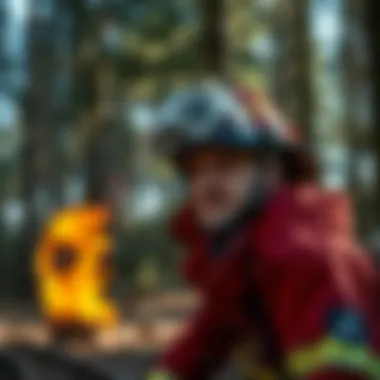
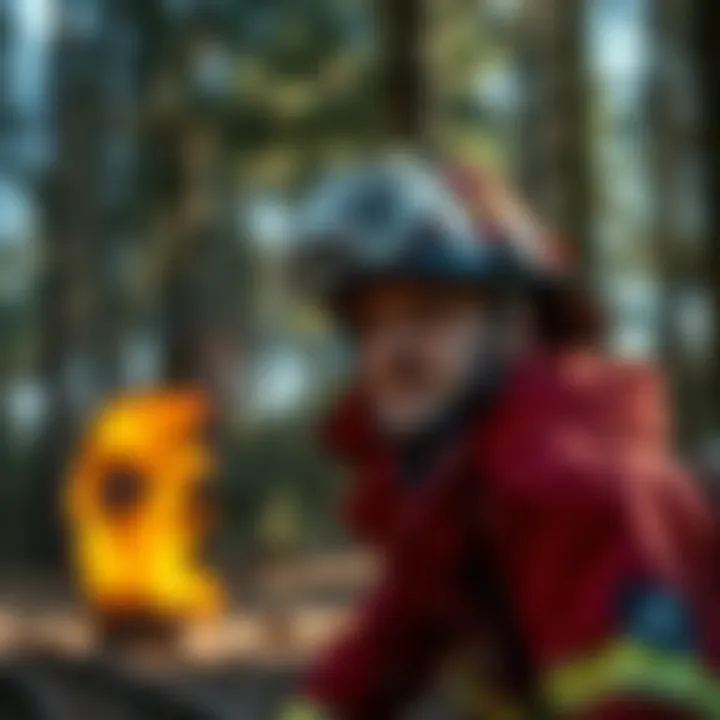
Intro
Firefighters stand as critical pillars of modern society, offering much more than just a rapid response to fires. Their role extends into various aspects such as community service, safety education, and even environmental conservatioon. As challenges grow in intensity and complexity—heightened by climate change and urban development—the significance of these brave individuals is only amplfied.
In this exploration, we’ll shed light on the diverse contributions firefighters make, the psychological and physical strains they endure, and the innovations that shape their work. Understanding these multifaceted roles allows us to appreciate their vital place in our communities.
Understanding Firefighting Practices
Firefighting, while it may seem straightforward, is rooted in a variety of practices that adapt to the needs of the community and environment. This section delves into the essence of modern firefighting and its ever-evolving practices.
Types of Firefighting Practices
Firefighting is not a one-size-fits-all operation. The following are key practices that firefighters utilize:
- Structural Firefighting: Focused on extinguishing fires in buildings, requiring skilled action and close coordination.
- Wildland Firefighting: Engaging in efforts against outdoor fires, this branch emphasizes tactical suppression methods.
- Vehicle Firefighting: This addresses fire incidents involving cars, trucks, and other vehicles, emphasizing quick response to prevent explosion.
These types of firefighting practices showcase the adaptability required in the profession.
Historical Context
The evolution of firefighting is a narrative steeped in development. Initially, communities lacked organized methods to combat fires, relying instead on bucket brigades. It wasn’t until the 19th century that modern fire departments began to emerge, driven by the increasing dangers of urbanization. The introduction of the steamer engine fundamentally changed the game, allowing firefighters to respond more effectively and rapidly.
As cities grew, so did the sophistication of firefighting techniques. Today, firefighters are armed with advanced technology, from thermal imaging cameras to fire-resistant gear, ensuring they’re better equipped than ever before.
Principles of Firefighter Community Engagement
Not only are firefighters first responders, but they also serve as crucial members of the community, engaging with residents to promote safety and preparedness.
Community Safety Education
Firefighters are known for their outreach efforts, providing vital education on fire safety. This can range from school educational programs teaching children about fire prevention to community workshops that focus on emergency preparedness. Their presence in the community fosters a culture of safety, emphasizing the importance of being prepared.
Support in Times of Crisis
Firefighters often act as a support system during crises beyond fires. For instance, many departments engage in disaster response during floods or severe weather events, assisting affected populations by providing shelter and help.
Psychological and Physical Demands
The job of a firefighter is not for the faint of heart; it requires significant dedication and resilience.
Psychological Challenges
Constant exposure to high-stress situations can take a toll. Firefighters often face traumas that can lead to conditions such as PTSD. Awareness and mental health support are crucial in this field, helping to ensure their well-being and effectiveness in service.
Physical Requirements
The physical demands of firefighting are immense. Ranging from carrying heavy equipment to enduring extreme conditions, firefighters need to maintain top physical condition. This pressure necessitates rigorous training and fitness regimens tailored to keep them prepared for the unpredictable nature of their job.
Innovations in Firefighting Technology
Advancements in technology continue to transform how firefighters respond to incidents. Today’s firefighters leverage cutting-edge tools that improve their efficiency and increase safety.
Technological Tools
- Drones: Used for surveying incidents from an aerial perspective, helping strategize firefighting techniques.
- Smart Gear: Wearable tech that monitors firefighters’ vitals ensures their safety in hazardous conditions.
- Firefighting Apps: Mobile applications help track incidents in real-time, improving communication and coordination.
As we look ahead, it’s evident that innovation in firefighting not only enhances operational effectiveness but also aids in the safety of both the firefighters and the public.
"Firefighting is not just a job—it's a series of responsibilities that connect deeply with community welfare and resilience."
In summary, the importance of firefighters in our society cannot be overstated. They play an essential role in ensuring public safety and actively engage in community support, while simultaneously adapting to the ever-changing landscape of modern emergencies. By acknowledging the depth of their significance, we can better appreciate their unwavering service.
Understanding the Role of Firefighters
Firefighters are often regarded as the bedrock of public safety in modern society. Their role extends far beyond simply extinguishing flames; it embodies a commitment to safeguarding lives, protecting property, and enhancing community well-being. Understanding the breadth of their responsibilities and historical significance is vital for appreciating the profound contributions they make every day.
Historical Context
The evolution of firefighting is as old as civilization itself. Initially, communities relied on volunteers to respond to fire outbreaks. Records show that in ancient Rome, the first organized firefighting service was established by Emperor Augustus in 24 BC, known as the Vigiles. These early firefighters would patrol the streets at night, prepared to douse any flames that threatened the city's infrastructure. Fast forward to the 19th century, and major cities saw the emergence of professional fire departments, driven by industrialization and a growing population. The implementation of horse-drawn steam engines marked a revolutionary step in firefighting techniques.
Throughout history, firefighters have grappled with the evolving nature of fire hazards, from residential buildings to increasingly complex commercial properties. This historical backdrop illustrates how their role has continually adapted while maintaining an unwavering focus on community safety and resilience.
Duties and Responsibilities
Firefighters perform a multitude of tasks that encompass both emergency response and proactive measures to stave off fire-related incidents. Their primary duties include:
- Fire Suppression: Responding to emergencies, tackling blazes with the use of water hoses, extinguishing agents, and cutting-edge technology. It's not a simple job; they often face hazardous conditions, risking their lives to protect others.
- Rescue Operations: In addition to extinguishing fires, firefighters rescue individuals trapped in dangerous situations. This can involve climbing ladders to save people from upper floors or navigating wrecked vehicles to extract those injured in accidents.
- Fire Inspection: Firefighters also engage in routine inspections of commercial and residential properties, ensuring compliance with fire safety codes. This preventive aspect is essential in identifying potential risks before they escalate.
- Public Education: Many firefighters devote time to educating the public about fire safety. This includes conducting workshops, offering resources on fire prevention, and spreading awareness about escape plans in case of a fire.
As the phrase goes, "An ounce of prevention is worth a pound of cure." Firefighters embody this principle through their readiness to act in crises, but also through their commitment to educating communities about fire safety. Understanding their diverse responsibilities enriches our appreciation for their indispensable role in society.
Emergency Response and Public Safety
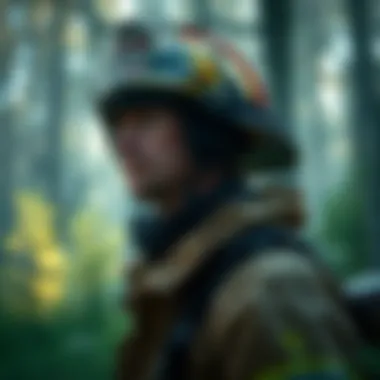
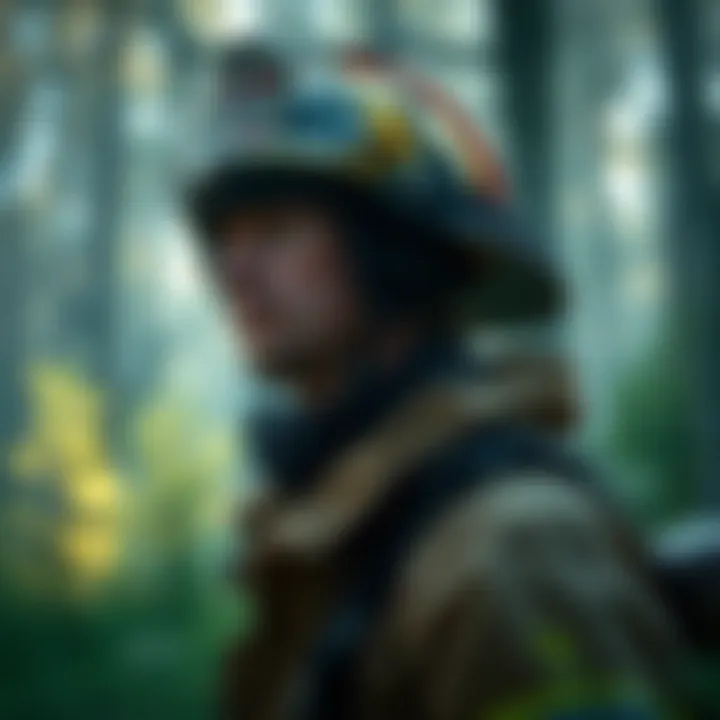
Firefighters are often the first line of defense during emergency situations. Their role in emergency response and public safety cannot be overemphasized. When fires erupt or natural disasters strike, firefighters engage in swift action that is paramount for minimizing harm and safeguarding lives. It’s not just about extinguishing flames; it’s a broader mission, involving quick decision-making, risk assessment, and community involvement.
Immediate Action in Crises
When a crisis occurs, the clock is ticking. Firefighters are trained for rapid deployment, often arriving on the scene in mere minutes. This immediacy can make a world of difference between life and death. For instance, consider a residential fire. It’s not just a property at stake; it’s a family, their memories, and their futures. With flames unexpected and the smoke billowing, firefighters orchestrate an immediate response, deploying hoses, utilizing ladders, and sometimes, employing lifesaving techniques.
- Communication is key: Before teams even arrive, many have already established communication with the incident command, allowing for an organized approach to the chaos.
- Safety protocols: They assess the safety of not only the victims but also the surrounding area to ensure no further dangers lurk, such as gas leaks or structural vulnerabilities.
Firefighters utilize a mix of experience and training to gauge the situation and determine the best course of action. This trained instinct is like a sixth sense. They don’t just react, they anticipate the needs of the scenario and act before things might spiral out of control. It's a hefty task that's carried out with poise under pressure, creating a safety net for the community.
"In the blink of an eye, our world can change, and that’s when firefighters step in to carry the weight of our safety."
Community Protection Programs
Beyond the noble acts of heroism during emergencies, firefighters also play a vital role in preventive measures. Community Protection Programs spearheaded by local fire departments serve as a proactive approach to emergency management. These initiatives educate the public on fire safety and risk reduction initiatives.
- Fire Safety Education: From workshops teaching families about smoke detectors and fire extinguishers to school programs aimed at children, promoting awareness helps reduce fire incidents.
- Home Inspections: Many fire departments conduct free home safety inspections to identify potential hazards before they become catastrophic. This preventive strategy is more than just checking smoke alarms; it often includes assessing electrical systems and recommending safe storage of flammable materials.
Firefighters engaging with the community fosters a spirit of cooperation and trust. When communities understand the risks they face and how to mitigate them, the need for emergency intervention decreases. Plus, it creates a culture of safety that ripples through neighborhoods, empowering individuals not just to rely on firefighters for help, but to take charge of their own safety.
Every day, firefighters craft the future of safer communities by educating and empowering citizens. Their involvement in these programs highlights that the work of a firefighter is not confined to the firehouse or the flames—they are a crucial part of the fabric of community resilience.
Educational Outreach and Community Engagement
Educating the public about fire safety and prevention is a cornerstone of modern firefighting. Firefighters are not just heroes that respond to blazes; they also play a pivotal role in educating communities, shaping behaviors, and fostering a culture of safety.
Fire safety is often overlooked until something goes awry. Educational outreach helps bridge the gap between knowledge and action. Communities that engage with firefighters in educational programs see a marked decrease in fire-related incidents. Not only does this safeguard lives, it also lessens property damage and the demands placed on emergency services.
Fire Prevention Workshops
One of the most effective means of outreach is through fire prevention workshops. These workshops provide hands-on experience where participants learn practical skills. For example, how to properly use a fire extinguisher or what steps to take if there’s a fire in the home. Such workshops can be conducted in local community centers, schools, or favorite local gatherings.
- Participants gain:
- Knowledge of fire hazards in common household items, like cooking oils or cleaning products.
- Skills to evaluate their own living environments for potential risks.
- An understanding of how to create and practice a fire escape plan.
Moreover, workshops are tailored to various age groups. Kids might learn through interactive games, while adults can participate in simulations of emergency scenarios. By engaging on multiple levels, firefighters can instill the principles of fire safety more effectively. The ultimate goal is to create a community that prioritizes prevention.
Collaborations with Schools and Organizations
Collaborating with schools and community organizations is another essential method of engagement. Firefighters often visit schools to teach children about fire safety, ensuring that lessons are not just informative but memorable too. They can employ storytelling, demonstrations, and interactive activities.
- Such collaborations yield several benefits:
- Building trust and visibility within the community.
- Instilling lifelong lessons about safety in youth, which can spread to families.
- Creating supportive networks among local organizations to tackle broader safety initiatives.
These partnerships often extend beyond classrooms. For instance, local firefighters might collaborate with non-profits to host community events that focus on safety. This is not only an opportunity to educate but also a way to strengthen ties within the fabric of society.
"Firefighters are more than first responders; they are educators, mentors, and leaders in fostering a culture of safety within our communities."
The integration of educational outreach and community engagement reflects how firefighters adapt to modern needs. By prioritizing these efforts, firefighters ensure they are not just reactive personnel, but proactive change makers dedicated to the safety of all.
Environmental Impact of Firefighting
The environmental implications of firefighting extend far beyond immediate fire suppression. Understanding these impacts is essential for evaluating the effectiveness of current practices and addressing the environmental consequences that arise from wildfires and firefighting efforts. Firefighters play a crucial role not just in managing emergencies but also in shaping how landscapes recover and ecosystems adapt post-incident. The following sections explore specific aspects of this impact, focusing on wildfire management techniques and the restoration of burned areas.
Wildfire Management Techniques
Effective wildfire management techniques are vital in mitigating the destructive force of wildfires. These practices not only protect human life and property but also preserve and manage natural resources. Techniques include controlled burns, also known as prescribed burns, which are intentional fires set under carefully controlled conditions. This method helps reduce excess fuel that could otherwise lead to more damaging wildfires. By intentionally burning certain areas, the buildup of dry leaves and brush is minimized, which reduces the chance of uncontrollable fires that can devastate vast areas.
Furthermore, firefighters utilize a range of strategic tools during wildfire suppression, such as fire breaks—areas cleared of vegetation to halt the spread of fire. These fire breaks are crucial in shaping fire lines, allowing firefighters to control the fire’s direction more effectively. Technique like these represent a proactive approach in managing not only immediate threats but also contribute to long-term ecological balance by maintaining healthy forests and grasslands.
"Controlled burns and strategic fire breaks are essential in safeguarding ecosystems against larger, more catastrophic wildfires."
When addressing fires, it's also important to understand the role of local ecosystems. By assessing the unique characteristics of each area, firefighters can tailor their approaches to better protect both human and wildlife populations. This localized knowledge aids in determining where fires can be beneficial and where they must be contained.
Restoration of Burned Areas
Restoration efforts following wildfires are vital to the recovery and health of both the environment and local communities. When land is ravaged by fire, it creates a canvas that requires careful and deliberate restoration. Firefighters often collaborate with environmental specialists to develop plans that not only rehabilitate the affected area but also enhance its resilience against future fires.
One aspect of this restoration process involves soil rehabilitation. After a fire, the nutritional balance of soil can be severely altered, affecting its ability to support new growth. Techniques to restore soil health may include the addition of nutrients or indigenous plant seeds. Native vegetation plays a critical role, serving as a protective layer that reduces erosion while also providing habitat for wildlife.
Additionally, reforestation efforts aim to restore tree populations that fire often decimates. Planting native trees not only helps restore the ecological balance but also fosters biodiversity, promoting a more resilient ecosystem. Community involvement in these efforts, such as volunteer plantings or educational programs, strengthens ties among residents and bolsters ecological awareness.
- The outcomes of effective wildfire management can lead to sustainable environments.
- Restoration practices foster resilience and biodiversity post-wildfire, ensuring future protection for both people and nature.
For further reading on wildfire management and ecological restoration, consider exploring U.S. Forest Service or National Interagency Fire Center.
These resources provide a wealth of information for forestry professionals and academics seeking deeper insights into the intersections of firefighting and environmental management.
The Psychological and Physical Rigors of Firefighting
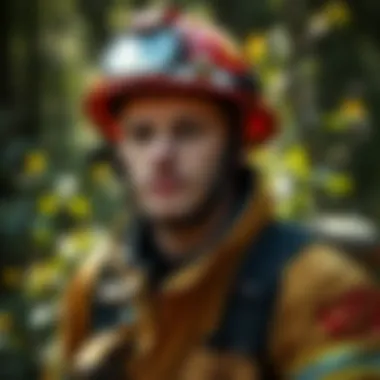

Firefighting is not just about putting out flames; it's a profession that demands not only valor but also immense psychological and physical resilience. The nature of their work exposes firefighters to a cornucopia of stressors, making their mental health a pressing issue. At the same time, the physical demands of the job require a level of fitness that few can sustain without dedicated effort. Together, these two elements form the backbone of fire service effectiveness and the well-being of those in this noble profession.
Mental Health Considerations
For firefighters, the psychological demands can be overwhelming. Each call they respond to can leave a lasting impact on their mental state. The realities of battling fires, witnessing accidents, and confronting tragedies can lead to stress and anxiety, often resulting in conditions like PTSD, anxiety disorders, and depression. It's not uncommon for them to carry these burdens quietly, as the stigma surrounding mental health can deter open discussions. This can create a toxic environment where many suffer in silence.
The importance of addressing mental health is paramount. A variety of organizations like the National Fallen Firefighters Foundation and International Association of Fire Fighters are beginning to make strides by offering resources, programs, and hotlines dedicated to mental well-being. Programs that promote resilience, stress management, and peer support can significantly mitigate these mental health challenges. It is essential to foster a culture where mental health discussions are normalized, ensuring that no firefighter feels alone in their struggles.
"Mental health is just as important as physical health. Without addressing one, the other suffers."
Physical Fitness Requirements
The physical fitness of a firefighter can be the difference between life and death—not just for them but for the communities they serve. The job requires stamina, strength, and flexibility. Firefighters must be capable of lifting heavy equipment, navigating perilous environments, and sometimes carrying injured individuals out of dangerous situations. This can involve long hours of physically demanding work, often under extreme conditions.
To cope with these demands, a rigorous physical fitness regimen is crucial. Many fire departments require candidates to pass a series of fitness tests designed to assess abilities like endurance, agility, and strength. These tests often include activities like:
- Climbing stairs with heavy equipment
- Carrying weights over a distance
- Performing tasks simulating firefighting scenarios
Moreover, continuous training is encouraged. Firefighters engage in regular workouts tailored to enhance their strength and endurance, preventing physical injuries while building resilience against fatigue. It is not just about being able to perform on the job; it's also about being fit enough to respond effectively to emergencies in the first place.
Technological Advancements in Firefighting
The landscape of firefighting has transformed remarkably, primarily driven by technological advancements. With the continuous evolution of tools and approaches, firefighters are now better equipped to tackle blazes and adapt to complex emergencies. This section delves into significant innovations that shape modern firefighting practices, highlighting how they enhance effectiveness and safety for both firefighters and the communities they protect.
Innovative Tools and Equipment
Firefighters today wield a host of innovative tools, greatly improving their operational effectiveness. Gone are the days of basic hoses and traditional axes. Here's a glimpse of some crucial equipment redefining firefighting:
- Self-Contained Breathing Apparatus (SCBA): Modern SCBAs offer advanced filters and better ergonomics, allowing firefighters to work longer in hazardous environments without succumbing to smoke inhalation.
- Thermal Imaging Cameras: These devices let firefighters see through smoke, identifying hotspots and locating victims. By turning heat signatures into visual data, they eliminate a great deal of guesswork.
- Firefighting Drones: Equipped with cameras and even extinguishing capabilities, drones can scout dangerous areas, provide real-time situational awareness, and help execute strategies safely.
- Automatic Fire Sprinklers and Alarms: These technologies are crucial in buildings, as they detect and automatically respond to fires before they escalate, protecting lives and property.
The integration of such equipment reduces rescue times and increases operational efficiency, making firefighting significantly safer and more effective. As technology continues to advance, we can expect more sophisticated tools to emerge, enhancing the firefighter's ability to combat various challenges.
Use of Drones and Technology
Drones have emerged as a game changer in firefighting. Their utility spans several critical operational areas, offering capabilities that traditional methods cannot match. Some key advantages of using drones include:
- Aerial Surveillance: For instance, drones equipped with high-definition cameras can provide real-time imagery of fire scenes, showcasing how a fire spreads or identifying inaccessible areas that require attention. This aerial view aids in strategic planning and coordination, allowing fire crews to deploy resources efficiently.
- Map Hazardous Zones: Drones can map out dangerous or hard-to-reach locations, such as remote wildfires. This allows firefighters to approach situations with a clear understanding of potential risks.
- Immediate Response Capability: In the initial stages of a fire, drones can quickly identify the nature and scale of the emergency, informing on-the-ground teams. Swift data dissemination can drastically lower response times, which translates into better outcomes for life and property.
"The use of drones in firefighting can often mean the difference between control and disaster, providing critical insight before crews even arrive on site."
Despite their benefits, it’s essential to recognize the challenges drones present, including regulatory concerns and limitations regarding battery life and range. However, with continuous advancements in drone technology and greater collaboration among authorities, their role in firefighting is expected to expand.
Crisis Management and Disaster Response
Crisis management and disaster response are at the heart of a firefighter's mission, not just during fires, but in the face of various emergencies that threaten lives and communities. The ability of firefighters to act swiftly and decisively in crisis situations is a critical aspect of ensuring public safety. This section delves into the intricate coordination involved with other emergency services and the methods employed to respond to natural disasters.
Coordination with Other Emergency Services
The collaborative landscape of emergency response is a dance like no other. Firefighters don’t operate in a vacuum; rather, they engage with police, medical teams, and even local government agencies to mitigate crises effectively. Each entity brings unique capabilities, forming a cohesive unit that can tackle a range of emergencies from structure fires to hazardous material spills.
Effective communication stands as the cornerstone of this coordination. Firefighters must relay vital information about the situation at hand, such as risk levels and the presence of hazardous materials, to the police and healthcare providers. This multi-agency cooperation ensures that resources are leveraged efficiently, reducing response times and minimizing confusion on the ground. When every second counts, the ability to work harmoniously can be the difference between disaster and successful outcomes.
Moreover, joint training exercises and drills play a pivotal role in cultivating this interoperability. By consistently working alongside other emergency services, firefighters can anticipate and effectively respond to a spectrum of challenges, enhancing situational awareness and responsiveness during real-life incidents.
Response to Natural Disasters
Natural disasters, be it fiery wildfires, torrential floods, or devastating hurricanes, demand a nuanced approach crafted over years of training and experience. Firefighters are often on the frontline, braving hazardous conditions to ensure the safety of both people and property. They adapt their techniques and strategies depending on the type and scale of the disaster, which can vary dramatically.
For instance, in wildfire management, firefighters employ a variety of tactics—from controlled burns to firebreaks—to contain and extinguish raging flames. Their intimate knowledge of local geography aids in designing effective containment strategies. They also engage with local communities to educate residents on evacuation routes and emergency plans so that during a wildfire season, everyone knows precisely how to act.
During floods, firefighters adapt their skills to rescuing individuals trapped in rapidly rising waters. They deploy specialized equipment like inflatable boats and high-water rescue gear, ensuring that they can reach those in danger.
"The role of firefighters extends beyond fighting flames; it encompasses saving lives, safeguarding communities, and empowering individuals to combat nature's fury together."
Furthermore, responding to hurricanes often requires pre-emptive action. Firefighters collaborate with local agencies to develop evacuation plans before a storm strikes, thereby ensuring lives are protected. They also provide support post-disaster, helping to clear debris and even returning to assist residents in recovery efforts.
Ultimately, the dynamic nature of disaster response highlights the critical importance of hands-on teamwork, strategic planning, and community involvement, all the while underscoring the indispensable role firefighters play in safeguarding modern society.
Useful Resources
- National Fire Protection Association
- Federal Emergency Management Agency
- U.S. Forest Service
- International Association of Fire Fighters
- National Guard - Response to Natural Disasters
- Centers for Disease Control and Prevention - Emergencies
- Ready.gov
The intersection of crisis management and firefighting embodies the essence of public service—where preparedness meets action to safeguard human life and community wellbeing.
Community Trust and Relationship Building
In contemporary society, the role of firefighters transcends mere firefighting. It encompasses forging trust and building strong, positive relationships within the community they serve. This trust is paramount. Firefighters are often among the first responders in emergencies, and when they step in, community members must feel confident in their capabilities and intentions. It goes beyond just tackling blazes—it's about comforting a neighbor in distress or saving a family pet from a house fire. An effective relationship between firefighters and the community can lead to better cooperation, increased safety measures, and a more informed public about fire prevention.
Fostering Community Relationships
Firefighters are often seen as beacons of hope and authority in the community. Building these relationships starts with being visible and accessible. Many firefighting agencies conduct public events such as open houses and safety fairs where citizens are invited to learn about fire safety and the firefighters' roles. These gatherings not only educate but create opportunities for informal conversations to develop rapport. Firefighters can participate in local festivals, school visits, and other community events, showcasing their commitment to the community.
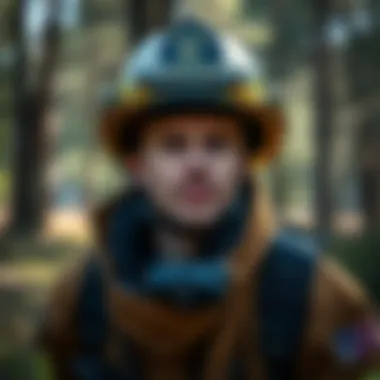

Another significant avenue of relationship building is through community outreach programs focused on fire prevention. For instance, firefighters can work with local organizations to address specific risks prevalent in the area, such as wildfire dangers in rural settings or fire hazards in urban neighborhoods. This tailored approach fosters trust and reassures residents that the firefighters are not just concerned with putting out fires but genuinely care about their safety. Programs like these can include smoke detector installations in homes for free or conducting fire drills in schools.
Crisis Communication Effectiveness
Effective communication is the linchpin of building trust, particularly during a crisis. Firefighters must be adept at conveying information both quickly and clearly to the public. During incidents like wildfires or large structural fires, timely updates can help reassure everyone involved and reduce panic. Using various platforms—including social media, community bulletins, and local news outlets—can dramatically enhance the reach of their messages and ensure that everyone remains informed.
Moreover, transparent communication after an incident can further enhance community trust. When firefighting agencies provide debriefings or public forums discussing what occurred, the lessons learned can help in future responses. Not only does this showcase accountability, but it also reinforces the perception of firefighters as community partners rather than just emergency responders.
Community trust in emergency services is cultivated through open dialogues and proactive relationship-building efforts.
In summary, establishing and maintaining community trust and relationships is critical to a firefighter's effectiveness. This is achieved through consistent engagement, education, and effective communication, ensuring the public views their firefighters as allies in both crisis and calm.
Challenges Faced by Firefighters
Firefighting, while noble and vital, comes with its own set of hurdles. As the guardians of our safety, firefighters frequently grapple with a myriad of challenges that can impede their effectiveness and impact. Understanding these issues is crucial, not only for improving firefighting practices but also for bolstering the support systems surrounding these brave men and women. The significance of addressing these challenges cannot be overstated, because overcoming them can enhance not just the safety of the firefighters but also that of the communities they protect.
Resource Limitations
One of the foremost issues is resource limitations. Budget constraints often mean that firefighting departments must do more with less. Equipment, training, and personnel must be evaluated and prioritized carefully; this can create a cascading effect where the lack of one element hampers the entire operation. In some small towns, fire departments might operate with outdated gear, hampering their ability to respond effectively to modern fire challenges.
For instance, consider a fire department equipped only with older model fire engines that may lack the sophisticated technology of newer models. In a fast-moving wildfire, this mismatch can significantly impair their tactical maneuvering. The inability to upgrade technology can lead to slower response times, which, in critical moments, could mean the difference between a contained incident and a full-scale disaster.
In addition to equipment limitations, the training is an often overlooked aspect. Without proper funding, firefighters may not receive the latest training in firefighting techniques or emergency medical services. These gaps can compromise safety, primarily when they face hazards that evolve with each incident. Simply stated, a well-equipped and well-trained firefighter is more capable of saving lives and property.
"Firefighting is not just about putting out flames, it's about community safety, requiring both training and tools to succeed."
Public Misconceptions
Another pressing challenge firefighters face is public misconceptions surrounding their roles and capabilities. Many individuals cling to stereotypes, viewing firefighters merely as brave souls who extinguish fires. This narrow view overlooks their multifaceted expertise that extends into medical emergencies, hazardous material handling, and disaster management.
For example, in situations involving hazardous materials, public ignorance may lead to mishandling or uncoordinated responses from civilians, who often think that firefighters solely deal with flames. This misconception can delay essential support, breeding confusion and potentially endangering lives. The truth is that firefighters are trained to handle a vast array of emergencies, making public education crucial in bridging this gap.
To counteract these misconceptions, firefighting departments need to engage more in community outreach. Workshops, open-house events, and social media campaigns can raise awareness about the wide array of their duties. By helping the public understand their diverse roles—from medical response to fire prevention—firefighters can foster a more informed public that appreciates their work.
Ultimately, addressing resource limitations and public misconceptions helps to build a robust social infrastructure where firefighters can thrive. Strengthening these areas not only enhances the firefighters' effectiveness but also establishes trust and collaboration within the community, leading to safer environments for everyone.
The Future of Firefighting
Trends and Evolving Practices
As we peer into the future, it’s clear that firefighting is on the brink of transformation, shaped by emerging trends and practices that redefine how these heroes operate. The integration of technology within firefighting isn't just a luxury—it's becoming an essential part of the game. For instance, the advent of smart tech in firefighting gear has enabled firefighters to monitor vital signs and environmental conditions in real time. This information can turn lifesaving, providing insights during a crisis that could otherwise spiral into chaos.
Moreover, there’s a rising emphasis on preventative measures through data analytics. Fire departments are increasingly harnessing big data to predict potential fire outbreaks by analyzing weather patterns, vegetation dryness, and even human behavioral data. It’s a proactive approach that shifts focus from putting out fires to preventing them, saving resources and lives in the process.
Initiatives like community-based fire safety trainings are also gathering steam. As communities take a more active part in fire prevention, the workload on firefighters can reduce noticeably. By fostering relationships and educating the public, firefighters can create a network of vigilance that identifies risks even before they materialize.
- Firefighters are utilizing drones for aerial surveys, enabling them to assess fires from different angles without putting themselves in danger.
- New firefighting suits made from advanced materials provide better heat resistance, allowing firefighters to stay safer while doing their duty.
It’s about time that the practice of firefighting evolves and keeps up with technological advancements, ensuring that both firefighters and communities are equipped to handle the challenges ahead.
Policy Changes and Impacts
Policy plays a pivotal role in shaping the landscapes within which firefighters operate. Policies surrounding funding and resource allocation significantly impact how well a firefighting team can respond to emergencies. With the increasing unpredictability of climate change, fire departments must push for policies that facilitate better funding for equipment and training. When more resources are allocated, agencies can not only enhance their immediate response capabilities but also invest in long-term solutions.
Another active area of discussion involves the regulation of fire-resistant materials in construction. Building standards that require the use of fire-resistant materials can be crucial in preventing fire spread, particularly in urban settings where structures are close together. These regulations must be dynamic, adapting to new data and innovations that come to light.
“The changing environment demands a shift in firefighting policies, ensuring that we are not just reacting after a disaster but preventing them from occurring altogether.”
Advocating for mental health policies for firefighters is equally crucial. The psychological toll of being on the frontlines can lead to burnout and PTSD. By enacting policies that prioritize mental well-being, we can ensure that our firefighters are equipped to handle both the physical and emotional demands of their job.
The future of firefighting thus hinges on a robust interplay between evolving practices and policy adaptations. By staying engaged and informed, stakeholders at every level can facilitate a landscape where firefighters not only take up their helmets with pride but do so with the confidence that the systems around them support their critical work.
For further reading on climate adaptation and policy effectiveness, refer to National Wildlife Federation or Wildfire Policy Center.
The End
The conclusion serves as a pivotal endpoint in our exploration of the invaluable contributions long made by firefighters in our modern context. It encapsulates not just their heroic acts during emergencies but extends to their role as educators and community pillars. Recognizing the science and skill required in firefighting goes hand-in-hand with understanding how their daily routines weave into the broader fabric of public safety and environmental stewardship.
Recap of Firefighter Contributions
Firefighters stand at the forefront of emergency response, exhibiting exceptional bravery every time they don their gear. Their contributions encompass various domains, including:
- Emergency Rescues: Time is of the essence during fires and accidents. Firefighters respond swiftly to save lives and property.
- Community Outreach: They engage with the public through education and prevention initiatives that help reduce fire hazards, such as conducting workshops in schools and participating in community events.
- Support in Disasters: Beyond fires, they play an integral role in managing natural disasters, coordinating efforts with other emergency services to provide relief and support.
- Emotional Stability: The presence of firefighters during crises can instill a sense of security, aiding in the community's emotional resilience.
Firefighters are not just first responders; they are trusted figures in their locales who forge durable bonds with residents. They represent a safety net, providing peace of mind in times of distress.
Call to Support Firefighter Initiatives
The significance of firefighters' roles brings us to a critical challenge that warrants attention—a call for community support and robust initiatives. Consider the following actions:
- Advocacy for Funding: Fire departments need stable funding to maintain and upgrade equipment; persistent budget cuts can hinder their effectiveness.
- Volunteer Programs: Community members can engage with local fire departments by joining as volunteers, which supports their outreach programs and builds camaraderie.
- Education and Advocacy: Supporting fire prevention initiatives through education can make all the difference; everyone in the community should be informed of fire safety measures and how to react in emergencies.
- Wellness Programs: To ensure the psychological health of firefighters, community-based wellness and mental health programs must be developed and supported.
Ultimately, recognizing the heroic work of firefighters is just the beginning. Communities should not only appreciate their outreach but actively participate in nurturing these life-saving heroes through meaningful support and initiatives. Every effort, no matter how small, contributes to sustaining the safety net they provide.
"Our ability to save lives is directly linked to the support we receive from the community. Together, we can build a safer environment for all."
For further information and ways to participate, resources such as National Fire Protection Association or Firesafe.org offer guidance and additional education on enhancing fire safety and supporting local firefighters.







